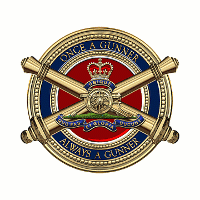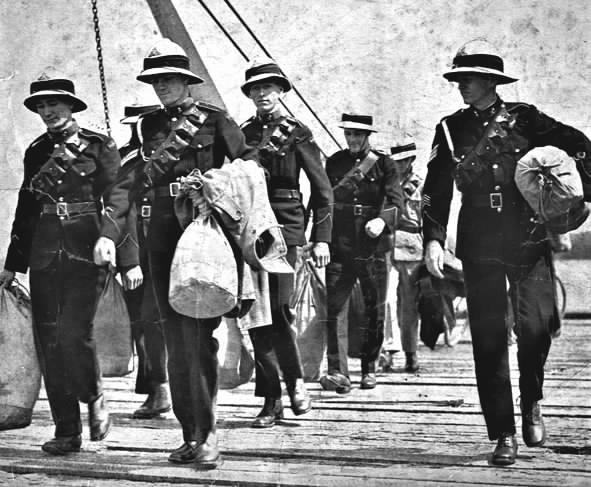During World War Two George was promoted to Lieutenant and became involved in the movement of guns for the Letter Batteries from Wallangarra to Brisbane. He was later posted to Darwin to serve on the coastal guns defending that city. For a short while he became the senior officer left in Darwin when the other much more senior officers beat a strategic journey south after the bombing raid on 19th February 1942. He followed this up with service in the jungles of Papua New Guinea and was posted to D Australian Heavy Battery to serve on the coastal guns at Buna.
George was posted out of D Australian Heavy Battery on 28th April 1944 and was returned to Australia to take up positions in Movement and Control, due to his civilian work prior to the War. He met his future wife, Dulcie, when he walked into the clothing store, where she was working as a member of the Australian Women’s Army Services, in Townsville and they were married in Brisbane on 10th February 1945.
George became involved in the administration of one of the depots in Brisbane involved in the demobilisation of men and equipment. George finally left the Army on 1st July 1946 with the rank of Major. (AWM Records state that he was a captain in D Australian Heavy Battery at the time of his discharge, however D Australian Heavy Battery was disbanded in September 1944 and George had been transferred out on 28th April 1944.)
After the War George returned to his civilian work as office manager for McDonald Hamilton, who handled shipping in Brisbane. In 1949 he was talked into rejoining the Militia (CMF), but this time into an Engineer unit and finally retired from the Army in 1966.
In 1988 when Ampol returned Fort Lytton to the Queensland Government George was among the first to answer the call to volunteer for duty as a Guide when Fort Lytton reopened to the public as a tourist attraction. He served in this capacity until late 2007, so in all George had links with Fort Lytton for 75 years. Mention must also be made of his research into the history of Fort Lytton, and along with Dulcie, George spent many hours at the State Library poring over old newspapers and documents.
With the help of Harry Lynas, George then produced 6 books detailing the history of Fort Lytton and the men who passed through the fort gates. For this work at Fort Lytton George was awarded the OAM, and was also made a Life Member of the Royal Australian Artillery Association, Queensland.
George and Dulcie had three children consisting of Doug, Judy and George, in all a total of 3 children and 5 grandchildren, all of whom, including Dulcie, survived him.
George Anthony Ludinski passed away on 1st June 2008 and was laid to rest in Pinaroo Lawn Cemetery at A1
|








